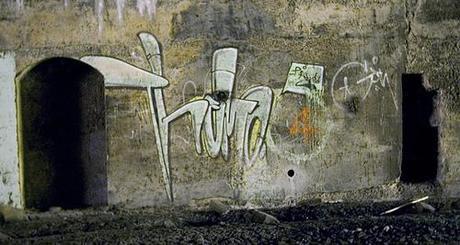

From an essay by Hassan Massoudy, “Two Daughters of the Same Parents” in Arabic Graffiti (p. 31):
The Arabic calligraphy I do literally comes directly from the heart, the movement of my arm and the heartbeat work together. When I direct the brush, I stop breathing. This also limits the size of the calligraphy; a brush stroke cannot last longer than it takes my heart to beat. So most Arabic calligraphy is limited to a diameter of maybe one, two meters. If the writing becomes any bigger, it has to be constructed and thus it is not calligraphy anymore, but a design...When I painted a mural with the French graffiti writer Marko 93 – the only time I did try to do actual graffiti – I discovered the fluidity of the spray can, which suddenly allowed me to do a continuous gesture of five meters before stopping a stroke.That is interesting, this distinction between “calligraphy” and “design.” Massoudy continues:
Arabic calligraphy and graffiti are two daughters of the same parents. Obviously both are about the use of letters and their alphabets, and their center of gravity is the beauty of writing. For both, a letter is more than just a letter and they fill them with emotions. The use of empty space and composition within this space is something else they have in common. The resemblance of Arabic calligraphy and graffiti is most obvious in tags, because here the tools – in and pen – are quite the same. Gestures are also done with the whole body and are in synch with breathing. The movement of writing graffiti leaves the restrictions of the paper – it is like a dance in front of a wall.Again, this is interesting, the gestures done with whole body. I’m sure that’s how Jackson Pollock’s very different gestures were done, with the whole body.


The graffiti images above all depict tags, some small, some quite large. All are made with the fluid one-breath strokes Massoudy talks about. The images below are different. Each shows an old Themo. They’re not a tags. They were constructed. But they retain that single stroke fluidity.



